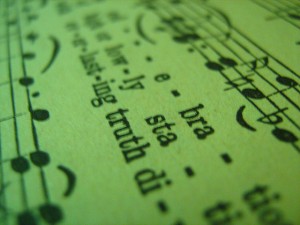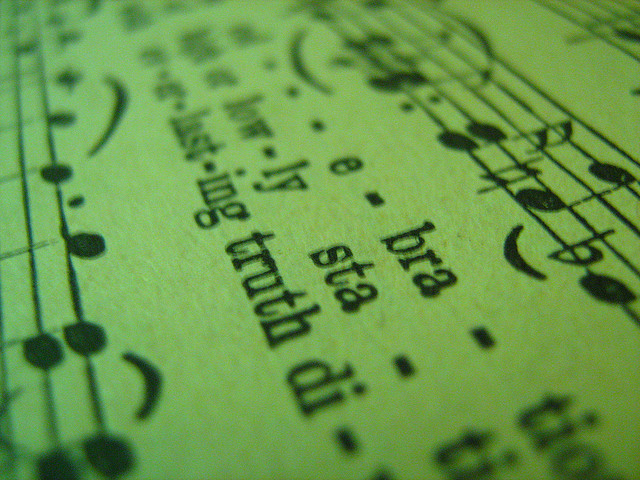 Here is the summary post for the July Monthly Forum: Discussing Method Books. Thanks to those of you who shared your thoughts!
Here is the summary post for the July Monthly Forum: Discussing Method Books. Thanks to those of you who shared your thoughts!
Your Thoughts
Allow me to summarize some of the main points that were made in the comments:
- Choose a piano method that will give students (especially beginners) a strong foundation for the future and ensure success.
- Choose a piano method that will suite each student’s interests and taste.
- Choose a piano method that has “good” and “real” music. (A couple of you made such references….perhaps this could be a launching point for further discussion: what does “good” or “real” music entail?)
- Don’t necessarily use the same piano method for every student.
- Be sure to supplement the method with books outside of the method, so that they are experiencing different types of repertoire.
Read all the comments for yourself here.
Your Favorites
You also shared some of your favorite piano methods in the comments. Here are the ones that were mentioned:
- “Play Piano Now!” from Alfred publishing – for adult beginners.
- “Music Tree” – for creative and bright students; strong in theory.
- Alfred Premier – for students ages 8-11; strong in theory.
- Alfred Prep and Alfred Basic – for young beginner students (ages 4-8).
- “Piano Adventures” by the Fabers – has imaginative pieces; encourages note-reading.
My Thoughts
My personal philosophy when it comes to piano methods is that there is no single piano method that is “the best” or that works for all students. Every student learns differently and every student has various goals, interests, and tastes in music. Therefore, the teacher must seek to find and use the piano method that will be best for each individual student. It is important for teachers to become familiar with the various piano methods available so that they can choose the proper method for each student.
Questions to Ask Yourself When Evaluating Piano Methods:
- Reading Approach: What reading approach does this method use: the Middle C approach, the intervallic approach, the multi-key approach, or an eclectic approach? Is this reading approach one that you generally have success with? Do you think this reading approach is appropriate for the student with which you are planning to use this method book series? Is this method based upon modern research in music education, or does it seem to be outdated?
- Illustrations: Are the illustrations appealing to kids? Are they in color or are they black and white? Is each illustration appropriate to the corresponding piece? Do the illustrations take up too much or too little space on the page?
- Technique: Do you agree with the technique for piano playing used in this method? How is technique taught — are there descriptions and/or illustrations? Is it taught in a way that even young students can understand? Is technique dealt with only in the Technique Book, or do the other books incorporate technique concepts as well?
- Theory: How is it incorporated? How well is it incorporated? It is dealt with only in the Theory Book, or do the other books tie in theory concepts as well? Do the theory activities look both fun and practical? Do the pieces in the other books relate to / make use of the concepts being taught in the theory book?
- Creative Activities: Does the method incorporate improvisation or composition activities? Are there other ways that the method encourages creative activities for the student, or does the method seem to focus chiefly on reading music?
- Layout: Do the pages make good use of space? Is the print too big or small? Are the staves/notes too big or small?
- Value: How many pages are in each book? Do the books seem like a good value for the price?
- Organization and Flow: Are the books organized into units or sections? Are concepts introduced in a logical progression, building upon what the student has already learned? Does the introduction of new material seem to happen gradually or sporadically?
- Supplemental Materials: Does the method provide supplemental books that you might find useful for your students, such as popular repertoire books, Christmas songs, hymn arrangements, duet books, etc.?
- Compositional Style(s): Do the pieces sound different from each other, or do they all seem to all sound the same? Do you think it will be necessary with this method series to supplement using books outside of the method so that the student is exposed to other compositional styles of music? Does the method provide a variety of styles of music? Are there arrangements of classical pieces and other well-known works? Are familiar folk tunes included? Are there pieces in various styles from around the world? Are there any jazzy, bluesy, or ragtime pieces? Are the pieces in general imaginative, artistic, and appealing to the ear?
For Further Reading
- This chart at musicedmarket.com gives a detailed comparison of five popular methods.
- This site at pianoeducation.org provides a short review of a variety of popular methods. May be slightly outdated.
- This post at The Teaching Studio contains some additional great thoughts concerning piano methods.
Still have more to share about piano methods? It’s not too late! Leave your comment in the comment section below.
Photo credit: littlefishyjes | CC 2.0


